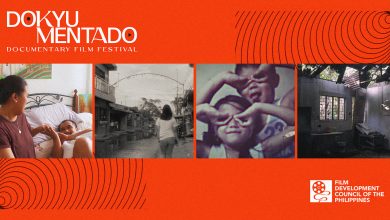MANILA, PHILIPPINES — If, as Oscar Award-winning storyteller Ronnie Del Carmen puts it, to go international is to go hyper-local, then Kurt Soberano’s Under a Piaya Moon is a Filipino film meant for the global stage. Despite a few glaring technical issues, the material itself is marvelous, able to transcend the shortfalls of an abbreviated production schedule and deliver cinema delicious enough to warrant several viewings.
Under a Piaya Moon tells the story of Stephen (Jeff Moses), a young baker and heir to his family’s beloved bakeshop in Bacolod City. With the bakery in the midst of a relaunch, he joins the region’s biggest baking competition to drum up publicity for his business. When his initial attempts in the competition don’t go too well, he turns to his grandmother Fina (Chart Motus) for help and gets a much-needed reminder to stay true to his Negrense roots.
It’s in putting these roots proudly on display that Piaya Moon finds its soul. The story takes place in 1988, at a time when Filipino identity was at a crossroads — and more so in Negros, which was still just barely recovering from a famine that ravaged the region. Stephen, like many Filipinos at the time, believed that his bakery needed to establish a more international identity, favoring Parisian-style desserts over traditional Negrense fare.
At the same time, however, the pressure to stay true to his roots pops up as casually as his grandmother says, “Negros sugar is the sweetest in the world.” While he believes that international cuisine is the way to go, it’ll effectively erase his bakery’s Negrense heritage. When your hometown is still reeling from a famine directly caused by government monopolization of the region’s main crop, is it really the right time to choose eclairs over napoleones?
Is it ever the right time to give up one’s roots in the pursuit of success?
At the very start, the film alludes to the sugar crisis in typically cheeky Filipino fashion, setting the tone for the baking competition Stephen joins: it isn’t just a contest to see who makes better desserts but a spiritual rallying point for those who need it.
The film’s own thesis makes it abundantly clear which side of Stephen’s dilemma it’s on, but the way it’s so lovingly crafted makes Piaya Moon something that deserves to be shared with the world. Rather than dwell on the histories that inform the story, the film chooses to celebrate every facet of the culture it wants Stephen to embrace. It’s Negrense culture, told through the all-too-Filipino languages of love and food.
Every dessert is captivatingly shot; every environment visited is so meticulously detailed that the audience can almost smell what it would’ve been like to be in Bacolod in the ’80s. Scenes at a fiesta find storytelling in the traditional music being played over the radio. Even the performances — by Jeff, Chart, and Joel Torre as Stephen’s grandfather, especially — bear such genuineness that the Hiligaynon language starts to feel familiar even to those who don’t speak it.
It is cliche to use the phrase “love letter” to describe films like this, but what better words are there to say of a movie that made this reviewer nostalgic for a place that was never his?
As with many local indie films, there are, of course, significant issues with Under a Piaya Moon. The sound editing appears to have been rushed, as the audio sometimes switches to whatever was recorded by boom mics and lapel mics instead of the ADR recordings. There are also some syncing issues with the dialogue and the subtitles, making the film a little harder to follow for the few minutes these issues pop up.
However, these are all easily fixed in post-production and were likely present during the film’s initial run because the filmmakers were pressed for time and budget. The bones of it — the story, the performances, the shots, and the absolute love for the region — are all some of the best of this year in local film thus far, and that’s what matters more. Even critics agree; Under a Piaya Moon debuted at the inaugural Puregold Cinepanalo Film Festival and won six major awards, including Best Picture.
Under a Piaya Moon also represents what this reviewer hopes to be a growing trend in local film: a soft migration away from Manila-centric stories. It’s long been a disservice to Filipino cinema that the vast majority of our stories come from the capital, especially when we have literally thousands of islands’ worth of tales. For a non-Manila story to be told — and to be told so authentically — is a gift to audiences both local and abroad.
What makes Under a Piaya Moon so good is its hyper-locality; this is a story that couldn’t have been told by other voices or in other settings. It is a meticulously crafted representation of its culture and its time, with a surprising amount of relevance to modern audiences. It’s Bacolod and La Carlota and Silay showing viewers why so many people love to call these places “home,” and why we need to see more of their stories in our theaters, on our streaming sites, and across the globe.
It is Filipino culture presenting itself, as a popular song from Piaya Moon’s time may have put it, as “a gift to the world.”
Under a Piaya Moon is currently screening at Gateway Cineplex 18 as part of the Puregold Cinepanalo Film Festival, which has been extended until March 26.








